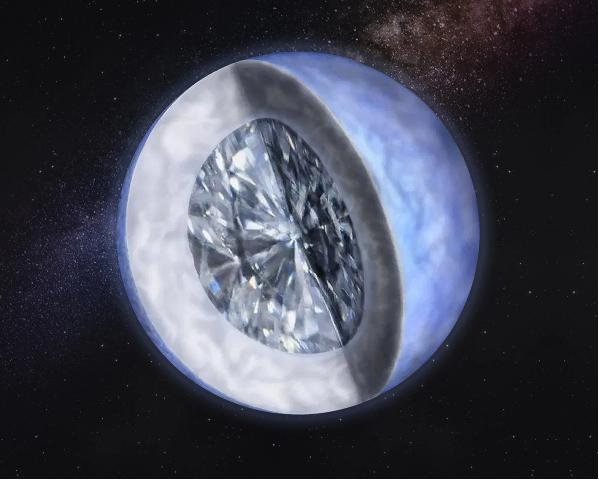Every week, TecMundo this #AstroMiniBR Bring together five interesting and fun astronomical curiosities produced by Twitter profile contributors to spread the knowledge of this oldest science!
#1: Splendor of dwarf galaxies
Dwarf galaxies show size undocumented?
brabinha has several billion stars and low luminosity, but in addition to being an important reservoir of dark matter, they play a fundamental role in the evolution of the universe.#AstroMiniBR
{c} ESA/Hubble, NASA pic.twitter.com/GWzZXgpYiO— yanna martins franco (@martins_yanna) 30 July 2022
As the name suggests, galaxies Dwarfs are small galaxies in the Universe. Compared to large spiral and elliptical galaxies, which can contain hundreds of billions of stars, dwarf galaxies typically contain only a few billion stars.
Many of these dwarf galaxies orbit larger galaxies. Milky Way or with our spiral neighbor, the Andromeda galaxy. Dwarf galaxies are believed to form either by gravitational forces in the early stages of the formation of larger galaxies or as a result of collisions between galaxies, where they form from streams of matter and dark matter ejected from merging galaxies.
In the Milky Way example, at least 14 dwarf galaxies are moons of our cosmic island. Despite their small size and nothing exceptional at first glance, their importance is essential to understanding the Universe: these celestial bodies are believed to be current versions of some distant galaxies observed very far in the Cosmos, and as such, they are helpful in understanding. The first stages of the formation of the first galaxies and stars in the universe.
#2: The biggest diamond in the Milky Way
The largest known diamond in the Milky Way is the crystallized carbon core of the white dwarf BPM 37093, named Lucy after the Beatles song Lucy in the Sky with Diamonds.
The diamond is about 4,000 km in diameter and 52 light-years from us.#AstroMiniBR pic.twitter.com/rmPwLt5B26
— Nicolas Oliveira (@nicooliveira_) August 4, 2022
Natural diamonds are relatively common on Earth, but in 1992 a group of Brazilian astronomers made an impressive discovery: a white dwarf variable star with a hydrogen atmosphere and a greater mass than Earth, about 50 light-years from the Solar System. expected. It was the star BPM 37093, a white dwarf over 4,000 kilometers in diameter, the largest natural diamond ever seen!
Its size causes it to be estimated at 10 billion trillion trillion carats, making the largest natural diamonds on planet Earth appear invisible in comparison. The discovery led to the star being affectionately nicknamed Lucy, in honor of one of the most famous and famous songs by the British band The Beatles. Lucy in the sky with diamonds.
Literally a gigantic diamond in the sky, Lucy has a crystallized carbon core and a core temperature of about 6,600 degrees Fahrenheit!
#3: New color image of James Webb
Following the James Webb saga, the Cartwheel Galaxy image has been released today!
This galaxy is very interesting because of its ring or wheel shape, which must have been formed by a collision with a smaller galaxy.#AstroMiniBR pic.twitter.com/sVYXzGmf3s— Elismar Lösch ????????? (@LoschElismar) August 2, 2022
The James Webb Space Telescope (JWST) released another stunning image this week revealing star formation in a rare wheel-shaped galaxy as a result of its observation through dust and gas. The galaxy is called the Cartwheel because of the appearance of an ancient cartwheel formed in a galactic accident billions of years ago.
It was observed by the Hubble Space Telescope, but gained new perspective through the JWST’s infrared filters. This new image reveals many previously unseen details in the galaxy’s structure as infrared light penetrates dust clouds that allow JWST to reveal individual young stars as well as clusters in the star-forming regions in the outer ring of the Cartwheel galaxy. The supermassive black hole at the center of the galaxy is made up of very young stars and is also shrouded in thick, dark dust.
#4: Hive cluster
Messier 44 (M44), also known as the Beehive Cluster, is an open star cluster in the constellation Cancer. It is one of the closest to Earth and can be easily seen with a pair of binoculars. It appears as a cloudy spot of light to the naked eye.#AstrominiBR pic.twitter.com/FRwwZ8EMiT
— Planetariums of São Paulo (@planetariosSP) August 2, 2022
The record above shows one of the closest star clusters to our solar system! Officially designated M44 in the Messier catalog, also known as the Beehive Cluster, is a group of young stars about 600 million years old. M44 is classified as an open cluster and spans about 15 light-years from end to end and contains about 1,000 stars in a region of space covering an area in the sky equivalent to about 3 full moons in the constellation Cancer.
Observed by ancient astronomers for thousands of years, M44 is visible to the naked eye and appears as a faint, translucent dot. Observation of M44 with binoculars and small telescopes already allows visualization of several red and cold giant stars surrounded by the cluster’s brightest blue and hot stars.
#5: The power of James Webb
Galaxies! Galaxies in any direction you look! through the stars of the M92 globular cluster, #JWST saves dozens of galaxies! #AstroMiniBR pic.twitter.com/x1X8dFByFN
— The Deep Sky Project (@CeuProfundo) 26 July 2022
JWST never ceases to impress with its power of observation! The above record shows the M92 star cluster 27,000 light-years from Earth in the constellation Hercules. Classified as spherical, this cluster (a sphere of stars orbiting the core of our galaxy like a satellite) was discovered in 1777 by German astronomer Johann Elert Bode.
Dozens of high-resolution galaxies can be seen in and around the cluster’s stars in the above image taken by JWST, yet another spectacular display of their instrumental sophistication!
Source: Tec Mundo
I am Bret Jackson, a professional journalist and author for Gadget Onus, where I specialize in writing about the gaming industry. With over 6 years of experience in my field, I have built up an extensive portfolio that ranges from reviews to interviews with top figures within the industry. My work has been featured on various news sites, providing readers with insightful analysis regarding the current state of gaming culture.












